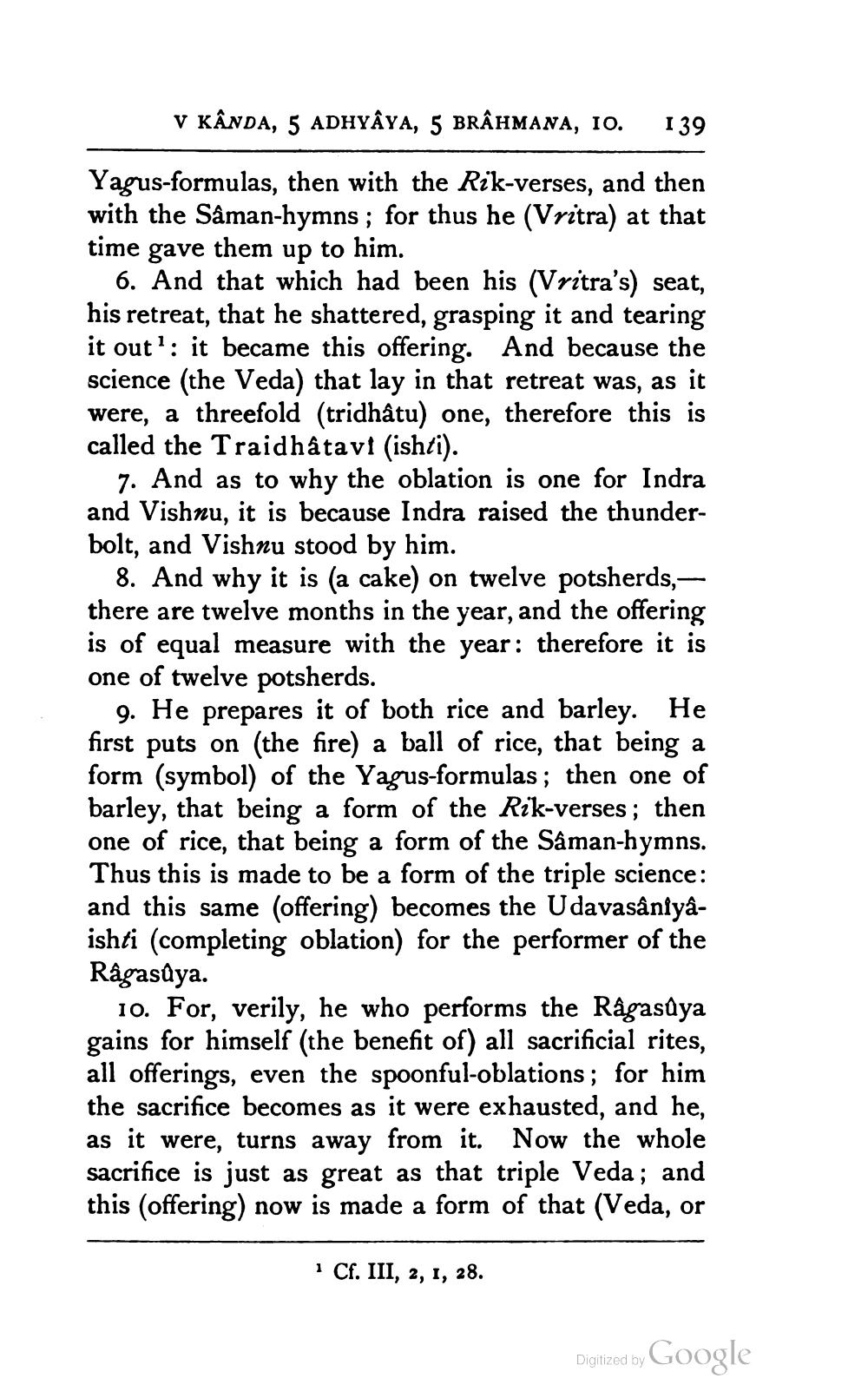________________
V KANDA, 5 ADHYAYA, 5 BRAHMANA, 10. 139
Yagus-formulas, then with the Rik-verses, and then with the Sâman-hymns; for thus he (Vritra) at that time gave them up to him.
6. And that which had been his (Vritra's) seat, his retreat, that he shattered, grasping it and tearing it out: it became this offering. And because the science (the Veda) that lay in that retreat was, as it were, a threefold (tridhâtu) one, therefore this is called the Traidhâtavi (ishti).
7. And as to why the oblation is one for Indra and Vishnu, it is because Indra raised the thunderbolt, and Vishnu stood by him.
8. And why it is (a cake) on twelve potsherds,there are twelve months in the year, and the offering is of equal measure with the year: therefore it is one of twelve potsherds.
9. He prepares it of both rice and barley. He first puts on (the fire) a ball of rice, that being a form (symbol) of the Yagus-formulas; then one of barley, that being a form of the Rik-verses; then one of rice, that being a form of the Sâman-hymns. Thus this is made to be a form of the triple science: and this same (offering) becomes the UdavasânÎyâishti (completing oblation) for the performer of the Râgasûya.
10. For, verily, he who performs the Râgasûya gains for himself (the benefit of) all sacrificial rites, all offerings, even the spoonful-oblations; for him the sacrifice becomes as it were exhausted, and he, as it were, turns away from it. Now the whole sacrifice is just as great as that triple Veda; and this (offering) now is made a form of that (Veda, or
1 Cf. III, 2, 1, 28.
Digitized by
Google




